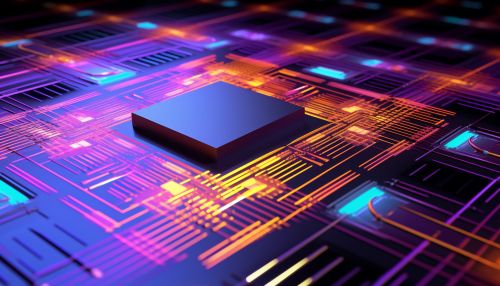Advances in Nanoscale Optoelectronics and Photonics
Introduction
Nanoscale optoelectronics and photonics is a rapidly evolving field that focuses on the interaction of light with nanoscale structures. This field has seen significant advancements in recent years, with new technologies and applications emerging at an unprecedented pace. The field is interdisciplinary, combining elements of physics, chemistry, materials science, and electrical engineering to create new devices and systems that operate at the nanoscale.


Nanoscale Optoelectronics
Nanoscale optoelectronics refers to the study and application of electronic devices that interact with light at the nanoscale. These devices, which include quantum dots, nanowires, and photonic crystals, have a wide range of applications, from solar cells and LEDs to quantum computing and biomedical imaging.
Quantum Dots
Quantum dots are nanoscale semiconductor particles that have unique optical and electronic properties due to their size and shape. These properties make them ideal for use in a variety of optoelectronic devices, including LEDs, solar cells, and quantum computing devices.
Nanowires
Nanowires are one-dimensional nanostructures with unique optical and electronic properties. They are used in a variety of optoelectronic devices, including solar cells, LEDs, and photodetectors.
Photonic Crystals
Photonic crystals are periodic optical nanostructures that affect the motion of photons in much the same way that ionic lattices affect electrons in solids. They have a wide range of applications, from telecommunications to biosensing.
Nanoscale Photonics
Nanoscale photonics, also known as nano-optics or nanophotonics, is the study of the behavior of light on the nanometer scale, and of the interaction of nanometer-scale objects with light. It is a branch of optics, optoelectronics and nanotechnology.
Plasmonics
Plasmonics is a sub-field of nanophotonics that focuses on the interaction between electromagnetic field and free electrons in a metal. Plasmonics can be used to guide and manipulate light at the nanoscale, which is far below the diffraction limit of light.
Metamaterials
Metamaterials are artificially structured materials used to control and manipulate light, sound, and other physical phenomena. The properties of metamaterials are derived both from the inherent properties of their constituent materials, as well as from the geometrical arrangement of those materials.
Nanolasers
Nanolasers are lasers that have nanoscale dimensions. They can generate light with extremely small coherence length and can be modulated at very high frequencies, making them useful for applications in computing, communication, and sensing.
Applications
The advancements in nanoscale optoelectronics and photonics have led to a wide range of applications in various fields. These include telecommunications, energy, healthcare, computing, and more.
Telecommunications
In telecommunications, nanoscale optoelectronic devices such as photonic crystals and plasmonic devices are used to transmit, manipulate, and store information.
Energy
In the energy sector, nanoscale optoelectronic devices like quantum dots and nanowires are used in solar cells to improve their efficiency.
Healthcare
In healthcare, nanoscale optoelectronic devices are used in biomedical imaging and sensing. For example, quantum dots can be used as fluorescent markers in biological imaging.
Computing
In computing, nanoscale optoelectronic devices are used in the development of quantum computers and other advanced computing systems.
Future Directions
The field of nanoscale optoelectronics and photonics continues to evolve, with new research and developments promising even more advanced devices and applications. Key areas of future research include the development of new materials and structures, the integration of nanoscale optoelectronic devices into larger systems, and the exploration of new applications in fields such as quantum computing and biomedical imaging.
